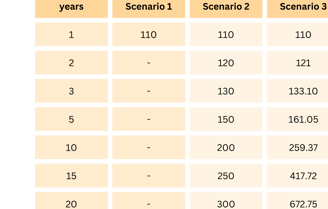The Single Most Important Factor for Athlete and Investor Success
What do athletes and investors have in common? The "secret" of their success.


Welcome back, everyone. In this article, we'll explore the single most important factor that unites athletes and investors.
These two groups are distinctly different, with seemingly little in common. Warren Buffett, the most successful investor alive, born in 1930, dedicates 25% of his daily calorie intake to Coca-Cola. Charlie Munger, his long-time associate, born in 1924, admits to rarely exercising.


Now, after these ethically accepted experiments on children, what do athletes and investors have in common?
You probably got it, a low time preference. Probably, if Lionel Messi or Warren Buffett participated in these tests, would have decided to wait for the second candy!
Investors and athletes' common struggle
If you are anything like me, you often set yourself the goal of working out, losing weight, and being ready for summer but often end up failing. You might even promise yourself to cut your spending, save more, and invest wisely.
Successful athletes work out when they need to, not just when they feel like it. They understand that it's the work you do when you're not in the mood that makes the difference. If you listen to any Michael Phelps interview, he'll make it clear that he trained 365 days a year, and on at least 100 of those days, he didn't even want to get out of bed. Every day a little step, every day a little something, that adds up and compounds into great results.
Compounds? What does it even mean? Compounding is a concept mostly used in the financial investment sector, best explained with an example:
If I have $100 and it earns 10% interest, after one year I will have $100 + $10 = $110. Now, let's delve into three scenarios:
1) Someone with a high time preference, overwhelmed by temptation, closes the investment and enjoys the 10% profit.
2) In a slightly better scenario, a person still has a high time preference, but less so than in scenario 1. They decide to take out just the profit ($10) and leave the initial $100 invested for the next year. In this case, this person will receive $10 yearly.
3) In the best scenario, a low time preference investor keeps the $110. The next year, if the investment yields another 10%, this will be 10% of $110, so $11. After two years, they will have profited $21 ($100 + $10 + $11). This wise investor decides to keep it invested for the third year, where the profit will be $12.10. After three years, the investor in this scenario will have transformed $100 into $133.10.
I think you get the point. After 3 years, the investor in scenario 1 enjoyed a 10% profit. In scenario 2, it's 30%, and in scenario 3, 33.1%. The investor in scenario 3 is using compounding to maximize their profit.
After 3 years, the investors in scenarios 2 and 3 have nearly the same profit. But let's look at the differences over time, as shown in the table below.
So, what possibly can they have in common?
The marshmallow test
The Marshmallow Test was an experiment conducted by Stanford psychologist Walter Mischel in the late 1960s. It involved gathering children of various ages and leaving them in a room with a marshmallow or cookie. The experimenter told them they could eat it if they wanted, but if they waited 15 minutes without eating it, they would receive a second piece as a reward.
In other words, the children faced a choice between immediate gratification (one candy) and delayed gratification (two candies). This effectively tested their time preferences. If a child chose the candy immediately, they exhibited a high time preference, if they waited, they demonstrated a low time preference.
What is time preference? And why is it important?
Time preference measures how much you value things now compared to in the future. A high time preference means preferring immediate rewards, even if they are smaller, while a low time preference indicates a willingness to wait for greater benefits later. It's a crucial economic concept that influences political, societal, personal, and financial decisions.
Returning to the Marshmallow Test, Dr. Mischel later found a significant correlation between low time preferences, as indicated by the test, and positive outcomes such as academic achievement, high SAT scores, lower body mass index, and a lack of drug addiction.
Impressive, right? It turns out that children who chose to delay gratification tended to be more successful later in life.


As you can see, the longer we wait, the more the investor of scenario 3 exponentially accumulates more money compared to scenario 2, and obviously much more than scenario 1, the investor with a very high time preference
This table can also apply to athletes. If you improve by 0.5% in every workout, the more frequently you work out (while avoiding injuries) and the longer you keep at it, the more exponential your improvement will be. This is how the best athletes manage to outperform their competition.
Working out, much like investing, isn't just about mechanical, continuous improvement. Mindset plays a crucial role as well. Both athletes and investors find their strategies and stick to them. They establish a process to follow and keep going consistently, never looking back. This applies even if they're having a bad workout day, dealing with injuries, facing bearish days in the stock market, or even recessions. They keep going and trust the process
Investors and athletes only truly fail when they give up. Falling during the process is a part of the journey, and each fall teaches a valuable lesson.
Concluding, The Single Most Important Factor for Athlete and Investor Success is time preference (or a hypothetical he positive result of the marshmallow test).
If you see yourself as having a high time preference, fear not! Developing a low time preference is achievable, much like learning most things. Step by step, you can train yourself to think long-term and adopt the mindset of a successful investor or athlete!


